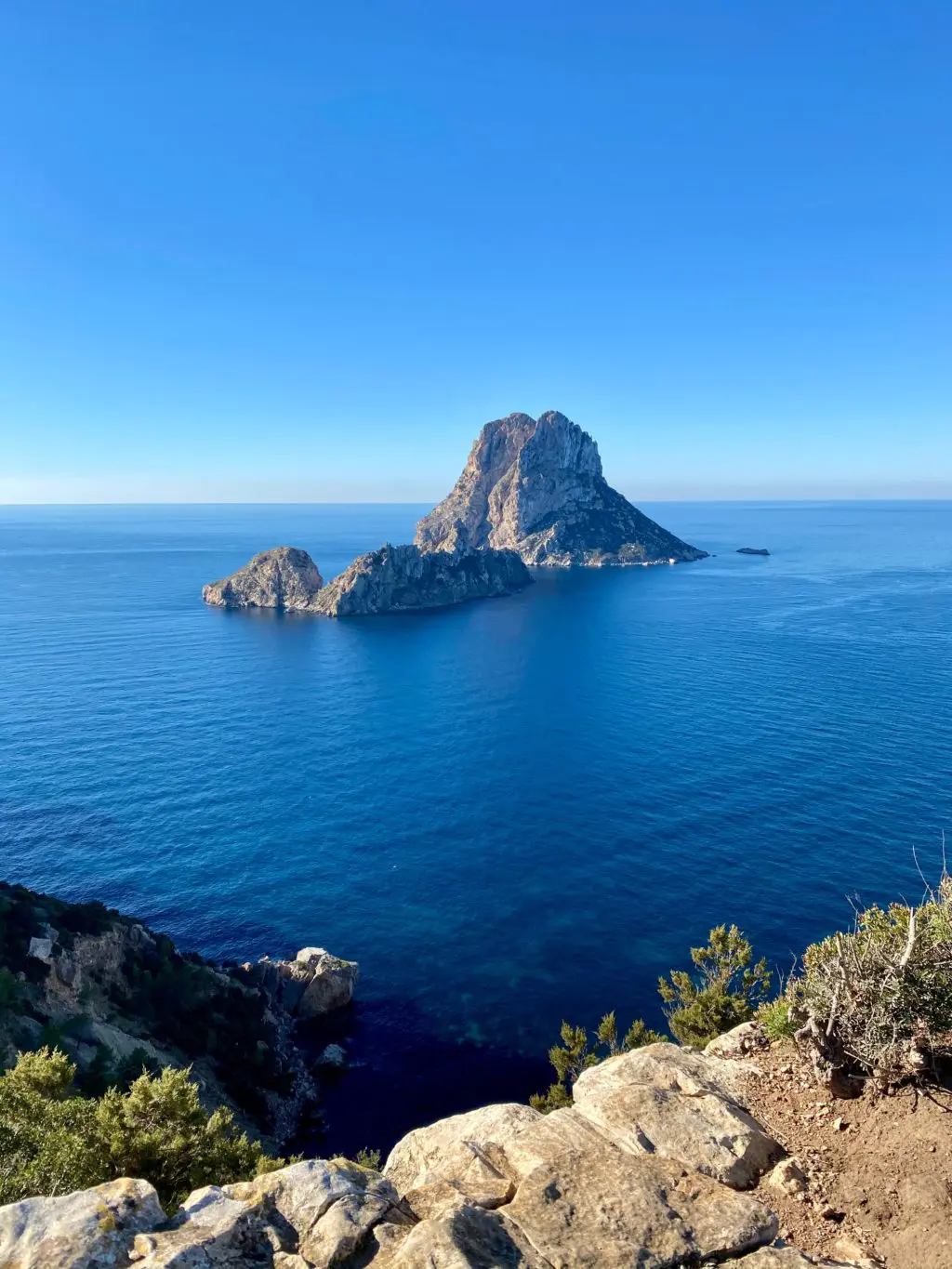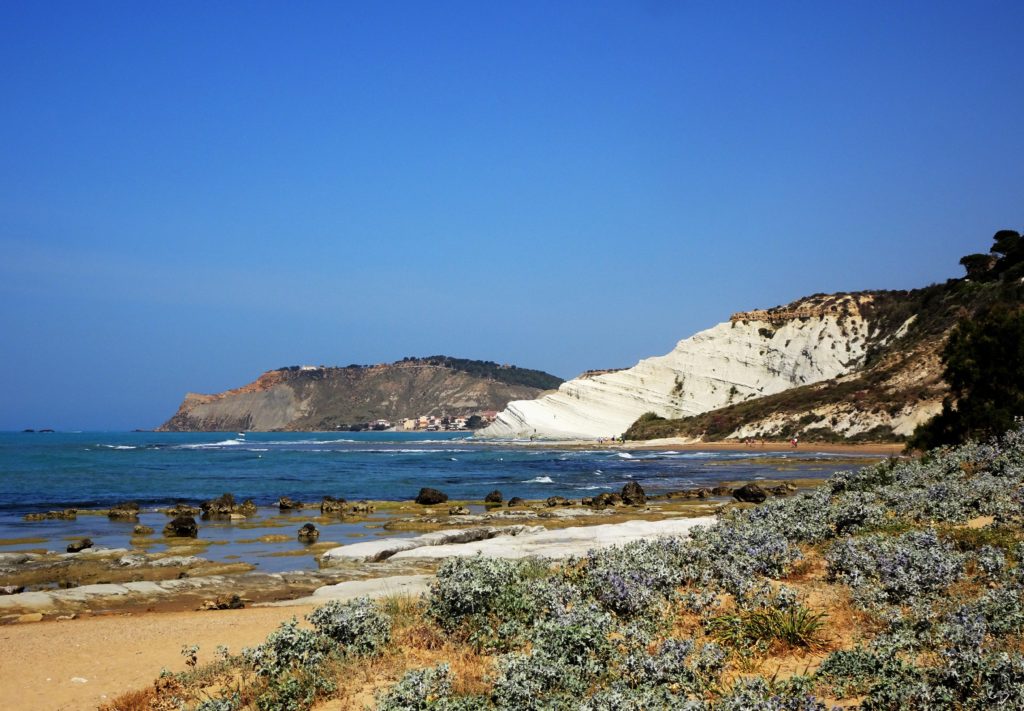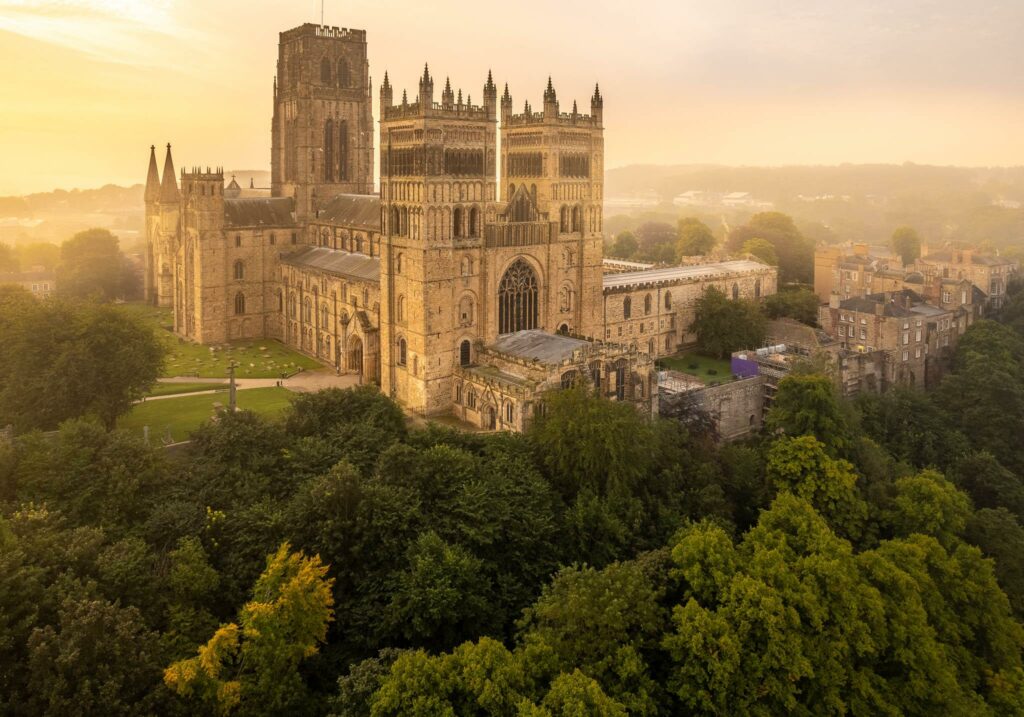You look out of the window, the sun is out, there’s not a cloud in the sky. You grab your camera, head to a photogenic location. You then spend several hours trying to work out why your compositions in blue skies photography are just not working.
We are told early in our photographic journeys that blue skies are good for photography. The default white balance is 5500, the mean degrees kelvin of cloudless midday in northern America. And of course, some shots look great with a blue sky. When I worked as an estate agency in London, we were often told that the exteriors need to be shot with a blue sky. This often proved quite a challenge in a wintery London. At least until the agents accepted that we could replace the sky in Photoshop. But I digress, today I want to look at why blue skies are not always good for photography.

Negative Space In Blue Skies Photography
Negative space is a compositional rule that uses a large area of the image with nothing in it, to draw attention to our subject. A clear blue sky can often be used to create a negative space image. However, when we are shooting a more general type of image, using different compositional rules, the blue sky can be an unwanted negative space.
Because the sky has no definition to it, our eye is drawn towards it rather than the subject. This is especially so if our subject is quite complex, for example, a landscape. We naturally try to find a balance in an image so our eye wanders through the complex landscape, then arrives at nothing. In search of something in the sky, our eye wanders out of the frame of the image and is lost.
To prevent this, we need something in that sky to stop the eye from passing straight through. This could be as simple as a solitary, white fluffy cloud. It could be as complex as an approaching storm.

Reflections Everywhere
The direct light of a cloudless blue sky can cause havoc with reflections. That’s only the reflections you can see, such as in glass water and metal. It’s also the more unexpected reflections such as that found in foliage. Leaves in particular are highly reflective. Shooting a forest or wood on a bright, sunny, cloudless day can give a very flat-looking image. This is something you might not have expected given the direct strong light.
Reflections can dramatically reduce contrast in our shots. Whilst it is true that we can counter some of them using a polarizer, we cannot get rid of them all.
- Shooting in a city with direct sunlight can be extremely problematic. The polarizing filter will take out reflections in glass, but it cannot remove reflections in any metal and a modern city is full of steel and other metallic surfaces.
- Scenes that contain a lot of reflections are best shot in a more subdued light. A light overcast with some definition in the sky is good as this still provides good light but it is more multi-directional and less prone to the harshest reflections.

Harsh, Direct Light
One of the biggest issues with a cloudless day is just how direct and harsh the light can be. We all know the effect of pointing a flash directly at our subject. It is a very similar effect with the sun high in the sky.
The direct light of the sun casts very strong shadows on our subject, leaving our images very high in contrast. Whilst we can soften this a little in post-production, it is at the risk of bringing noise into those shadows. In such direct light, it can be very difficult to expose correctly for the shadows. The dynamic range of such scenes often exceeds that of our sensors. This means that if we push our exposure too far to the right, lifting the shadows, there is a high risk that we will blow the highlights. Blown highlights are even more problematic than noise in the shadows. Once the highlights are blown it is impossible to lift them in post-production. All you will do is replace the pure white with a mushy grey.
- If you need to shoot on a cloudless day, it is better to do so in the early morning or evening. The sun’s lower angle means that is more diffused as it passes through the atmosphere. In turn, this gives softer, nicer-looking shadows to our image.
- If you absolutely have to shoot in the middle of the day, look for more open areas without objects that can cast harsh shadows. If your subject is a person, bring fill in flash or white cards to soften the harshness of the shadows.

What Blue Skies Are Best?
Of course, this very much depends on your subject. A bright colorful scene can benefit from pretty, white fluffy clouds in the sky. This acts as a barrier to the image edge, bringing the eye back to the main subject. A polarizing filter will darken the blue of the sky and bring an attractive contrast to the clouds.
Some scenes benefit from a changeable sky. The mix of clouds and blue sky can cast soft shadows on a landscape giving it depth and definition. The movement of the clouds in front of the sun can give us beautiful god rays, adding warmth and mystery to a scene. The same is true of an approaching storm. Storms can add different hues and colors in addition to the blue sky, making for an enchanting-looking image.

As I said at the top, not all clear blue skies are bad for photography. Your typical holiday brochure/postcard-style shots thrive on a clear sky. However, in many cases, it can lead to an uninspiring-looking shot that has no great impact. Add in a little definition to that sky in the form of clouds and the whole dynamic of the image can change.
Next time you stick your head out of the window and see a clear blue sky, ask yourself what you want to shoot. You might find it prudent to wait for some clouds to come and add definition and form to that sky.
Further Reading:
- How To Master Night Sky Photography
- This is How To Achieve A Blue Sky Using HSL And Filters In Lightroom
- Photoshop Tutorial: How to Easily Replace The Sky in Your Photos Using The Gradient Tool
- Create A Dramatic Dark Sky Effect In Photography
- Feeling Blue: 10 Tips For Shooting On Blue-Sky Days
- Blue Sky Photos Aren’t All That Bad




